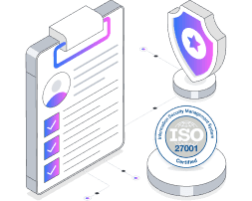Website Hacked? Here’s How to Fix It Fast and Prevent Future Attacks
Searching Google using the phrase “Fix Hacked Website,” chances are you are not alone. Hacking of websites constitutes a global pandemic as it affects sites of small businesses as well as giant e-commerce websites. Every 39 seconds, cyberattacks are staged on average in 2025, and downtimes of an hour or two may leave thousands of dollars and reputational losses. You can be running a WordPress store, SaaS site, or a business site; being able to restore quickly can be the difference between life and death. This article will guide you through all you need to know about fixing hacked websites, a step-by-step process of recovery, and how to avoid future hacking with professional remedies such as penetration testing. Signs Your Website Is Hacked The problem with a compromised site is not raised in a high voice. The majority of the indicators are usually slight before it is too late. The most common red flags that your site has been breached are the following: And now, in case you are experiencing the listed symptoms and wondering what to do when my website is hacked, the initial action is to relax. The earlier you are sure about the problem, the earlier you can rectify it, and that is precisely what the next section will walk you through. Step-by-Step Guide to Fix a Hacked Website When your website is compromised, an immediate response can help avoid further compromise. These are the steps to safely and efficiently recover: 1. Remove Your Site from the Online Environment Temporarily Put your site into maintenance mode or shut down access to avoid further damage and stealing of data theft while you’re investigating. 2. Alert Your Hosting Provider Most hosting companies have incident response processes. They may assist in isolating the breach and provide logs or backups. 3. Scan for Malware and Backdoors Use trusted tools like Sucuri SiteCheck, Wordfence, or Quttera to detect injected code, malicious scripts, and vulnerable files. 4. Remove Malware and Clean Files Manually or with tools, remove infected files, rogue admin users, and suspicious code. Avoid restoring a backup unless you’re sure it’s clean. 5. Update Everything Update your CMS, themes, plugins, and third-party extensions to patch vulnerabilities that hackers might have used. 6. Change All Passwords Change passwords for your hosting account, CMS admin, FTP, databases, and email accounts used by the site. 7. Verify User Roles and Access Logs Only grant access to approved individuals. Check logs to trace how the attack occurred and when it took place. 8. Re-submit to Google for Review If your site was blacklisted, appeal for a review through Google Search Console after cleaning to regain your SEO credibility. Need professional assistance to clean and secure your website quickly? Employ a penetration testing company such as QualySec to detect vulnerabilities and fix them before hackers can use them again. Hire a Penetration Testing Vendor (Like QualySec) When you do not know how your site was hacked or you cannot be certain that your site is really clean, then the next thing to do is to hire a penetration testing company. QualySec is an expert VAPT (Vulnerability Assessment and Penetration Testing) company that specialized in exposing security holes and executing real life cyberattacks to detect weaknesses in advance before malicious users. The team of certified ethical hackers provides: Not sure how the attack happened? That is where a company like QualySec comes in — to locate where the breach occurred, how it happened, and to give you a comprehensive picture of how you can avoid repeating the same thing. Find out how QualySec can assist you to restore your site and protect it. Also read: How to Choose the Right Security Testing Service Provider for Your Business? Why Hire Professionals Like QualySec? Recovering a hacked site is not only about recovering, but it is also about ensuring debugging. And that is where cybersecurity specialists such as QualySec stand in. This is the reason why collaborating with them can make a difference: If your website has already been compromised, acting fast is important. Acting smart is what prevents the next attack. Post-Recovery Actions After cleaning and restoring your site, it is essential to make your defenses tighter. This is what transpires after that: 1. Publish and submit to Google In case your site was flagged or blacklisted then you need to log-in Google search Console and ask security review to make it visible. 2. Implement Web Application Firewall (WAF) Use a WAF such as Cloudflare or Sucuri to directly block suspicious traffic and guard against future attacks. 3. Allow Backups per Day Set up automatic backup in a safe place. This will allow you to start afresh in case of other breakage, so that you are able to recover faster. 4. Timely Monitor Your Site Monitor performance, changes, and threats in real-time using tools such as UptimeRobot, Wordfence, or Patchstack. 5. Make a Regular Penetration Test Schedule The next attack is not to be waited for. Pay professionals to perform VAPT testing on a regular basis so that weaknesses are revealed ahead of the bad guys. Latest Penetration Testing Report Download Conclusion A website hack is not simple to recover by removing questionable files or restoring a backup. It is a reminder to do more adequate digital hygiene and a sturdier infrastructure. A damaged site may cause data leaks, mistrust of clients, Google penalties, and even prosecution, in case personal or financial information has been compromised. Regardless of whether you have a small blog, a medium-sized ecommerce store, or a platform like an enterprise, the procedure that should help you fix hacked website issues should be combined with quick action and technical expertise, with a long-term strategy. It is not only the issue of stopping the leak, but also needs to comprehend how the hack was possible, repair the holes, and make sure that it will never happen again. And therein come experienced cybersecurity experts such as QualySec. Knowing how your site was hacked, up to




